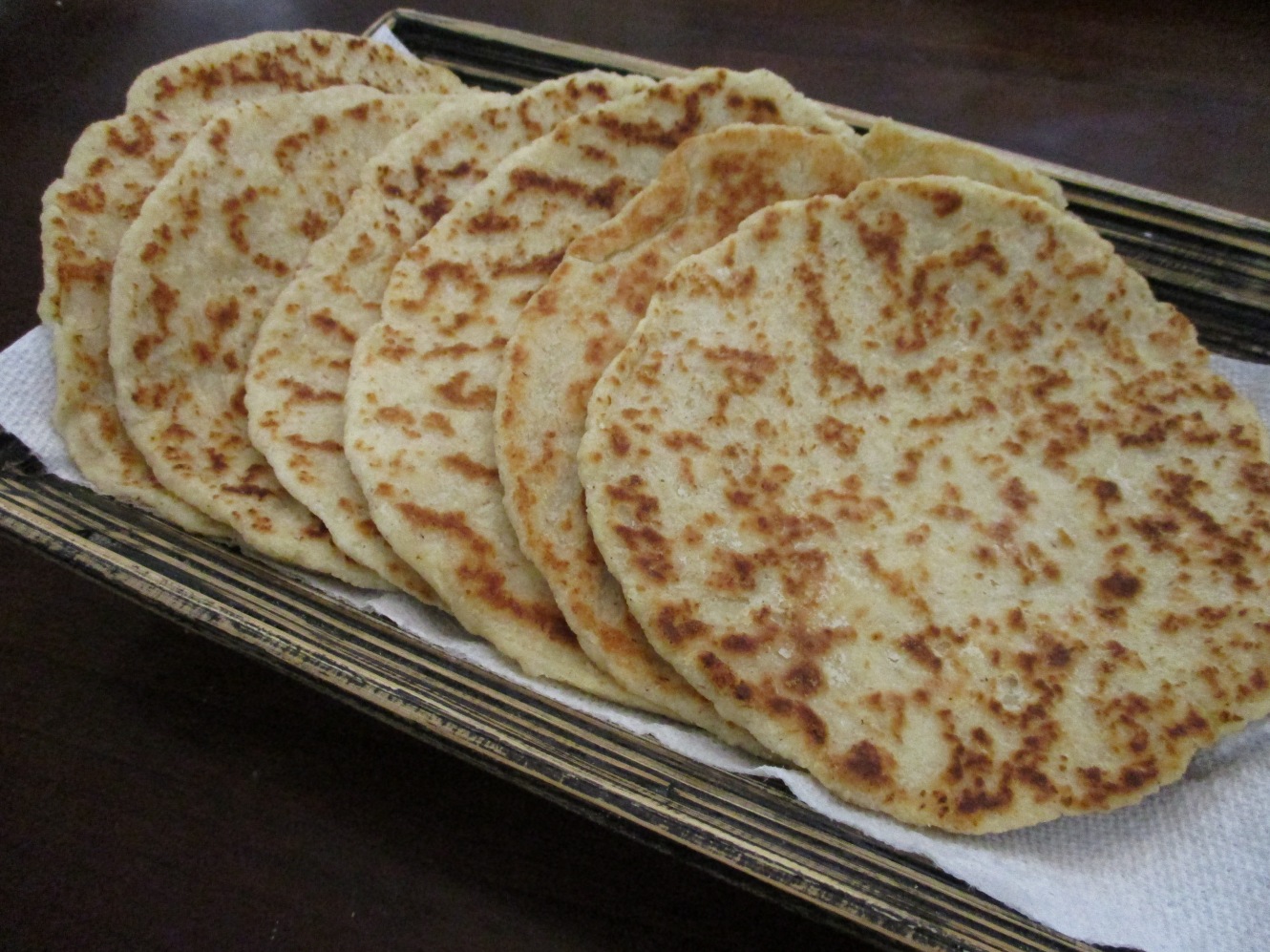Let’s get to that Noon Sangak flatbread I mentioned in my last post. How I miss Iranian street bread! They cook in on pea gravel or pebbles in huge open ovens. Bread is called ‘noon’ in Iran and the particular 2-foot sheet-bread I recall is called ‘sangak’, as it is cooked on an open-front, kiln-like oven directly on the surface of the white hot pebbles therein. I found a wonderful video on this bread making I will share: https://thecaspianchef.com/2020/03/28/naan-sangak-persian-flatbread/. He uses much larger rocks, but you get the idea from his nice video. The Teheran bakeries used a size pebble we call pea gravel here in the U.S. The also used long-handled wooden paddles to reach in the ovens to just flip the oiled bread dough onto the pebbles, and long tongs for flipping the sheets over to cook the second side. They picked off the burnt-on pebbles cursorily when it came out of the oven and quickly flopped the sheet onto awaiting brown paper for carrying home.
This recipe for bread I have been working on for quite sometime in my attempts to replicate their bread with minimal flour. It is finally to a nice point both in texture (somewhat chewy) and flavor. Though not true ‘noon-sangak’ by any stretch of the imagination, as a low-carber that can’t eat a lot of whole wheat flour, it is similar in flavor and texture for serving with my Middle Eastern foods. It is excellent right off the griddle hot with butter and will work well with your favorite curry recipes. It also works for rolling and filling with eat mixtures or just for dipping into some hummus or Syrian Za’atar herb/oil mixture well-known throughout the Middle East. I think any way you decide to serve it, this bread, for me, comes close to a ‘noon-sangak’ experience, minus the pebble part, that is.
This recipe is not suitable until you are at the grains rung of the Atkins carb re-introduction ladder as there is some flour product in it. But I found this little bit of flour absolutely necessary. All trials for flat breads to dat attempting to use coconut flour alone, almond flour alone or any combination have come out just awful in my opinion. This bread is one step closer in the right direction.
INGREDIENTS:
1 c. low-carb CarbQuik bake mix (or some other low-carb bake mix)
1 c. almond flour
½ c. Einkorn whole wheat flour (from Jovial Foods)
3 T. psyllium husk powder
1½ tsp. baking powder
¼ tsp. sea salt
2 T. olive oil
1¼ c. boiling water (added slowly, as all may not be needed)
1 T. olive oil for browning on griddle
DIRECTIONS: Bring a kettle of water to boil and pour off 1¼ c. into a measuring cup (preferably one with a pour spout) and have by your work bowl. Measure dry ingredients into a large mixing bowl and stir well to blend ingredients evenly. Drizzle the 2 T. olive oil over the dry ingredients. With water in your left hand and a fork in your right, slowly pour most of the water (1 c.) over the dry ingredients whisking with your fork continuously as you do so. All should begin to come together into a single mass of dough. It will firm up as you work the dough. Only add the remaining water (in small increments) if the mass of dough seems too dry to knead. Dough will be a little sticky at first, but it dries slowly as you work it. Use a silicone spatula to help you work the dough into a contiguous ball of dough and to scrape down the sides of the bowl to get all the dough. Let dough sit on counter for 12-15 minutes or until you can hand knead it.
Knead the dough 8-10 times. You can dust your hands with some low-carb flour to help you with handling if need be, but if the dough has set long enough, it should be getting dry enough extra flour dusting should not be necessary.
Set dough ball on a silicone sheet (or a piece of plastic wrap “glued” to your counter with a swipe of water), form a log shape with the dough. Cut the log into 8 equal pieces. Roll each into a smooth ball of dough with your palms and set on the edge of your silicone sheet while you work. Cover with a clean kitchen towel if you are a slow worker so it won’t dry out. Heat a non-stick griddle to medium-high heat. The remaining 1 T. olive is for oiling the griddle. With your spatula, dot the griddle lightly between batches as you cook the breads, much as you do when making pancakes.
I cook 2 round flat breads (or 2 oblong one) on my griddle (spans 2 stove burners). Using your palms and fingers, press 1 ball of dough on your silicone sheet into a 5-5½” circle. Again, you can dust your hands with low-carb flour if need be, but I found it wasn’t necessary. Lifting the silicone sheet, tip the flat dough round onto your free hand and transfer to hot, oiled griddle. Brown to a golden color on both sides. Remove to a serving platter and set near stove to keep warm while you cook the remaining sheets. Serve at once with butter, za’atar herb/oil mix or your favorite Middle Eastern foods.
VARIATION: If making to use as tortillas, divide the log of dough into TEN portions and roll it out much thinner, as thinly as you can. Each tortilla will have 126 calories, 11g fat, 13.37g carbs, 7.7g fiber, 4.8g protein and 180 mg sodium

